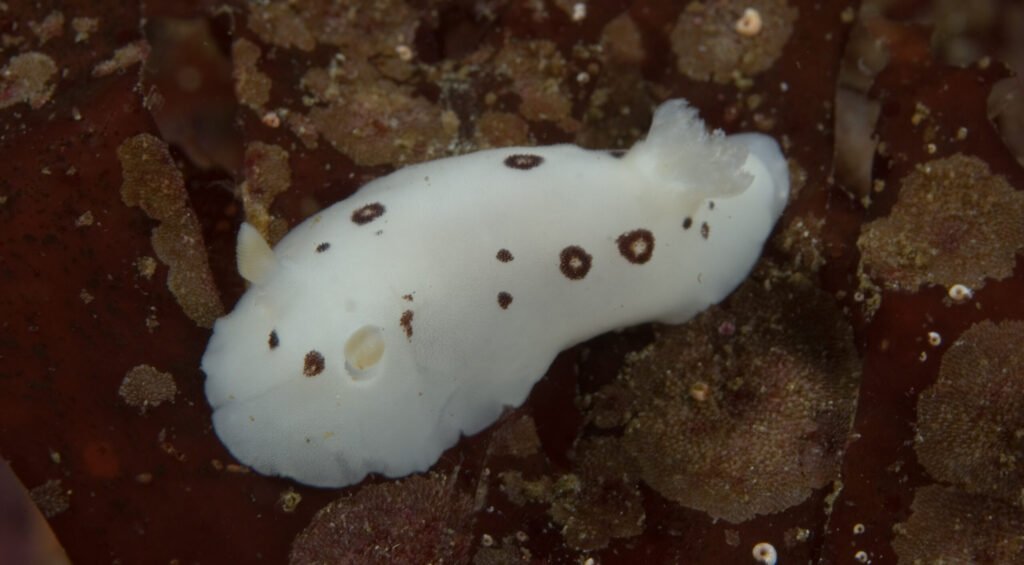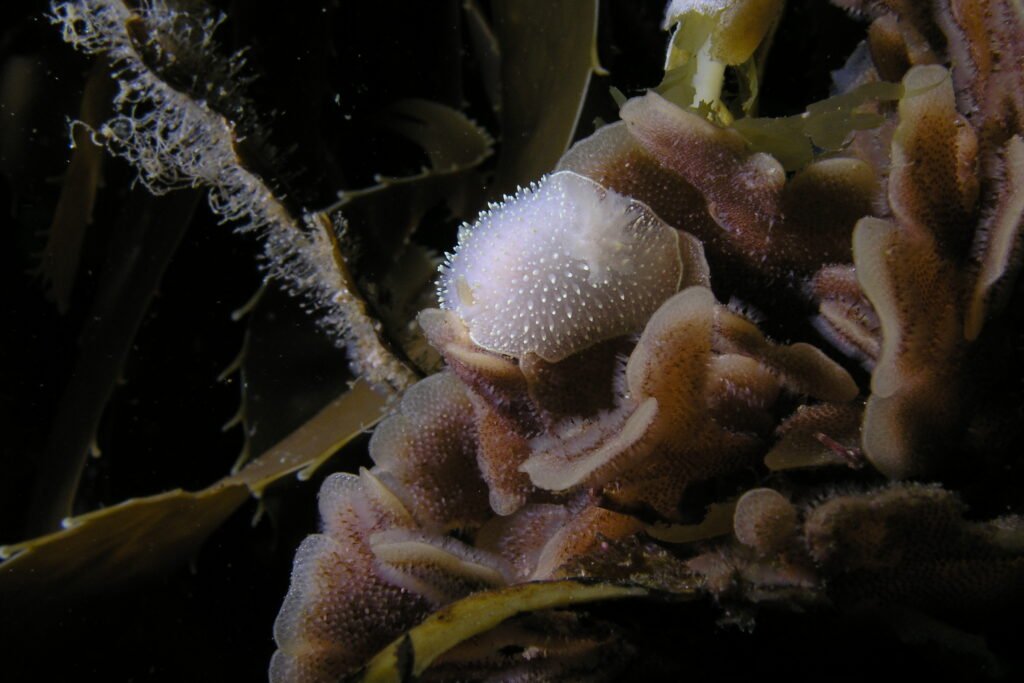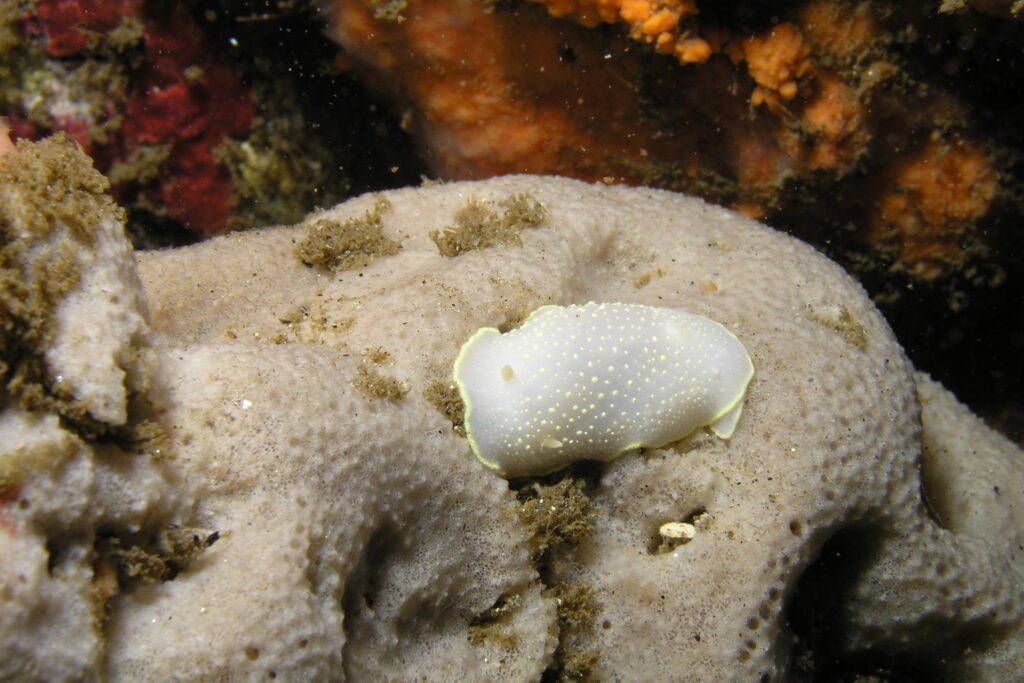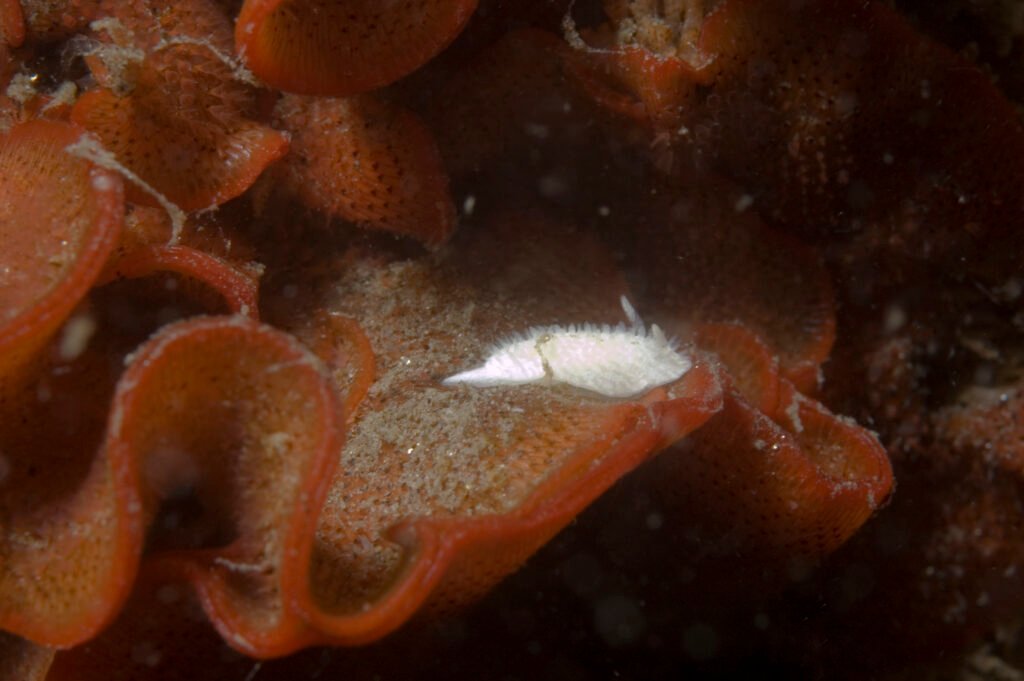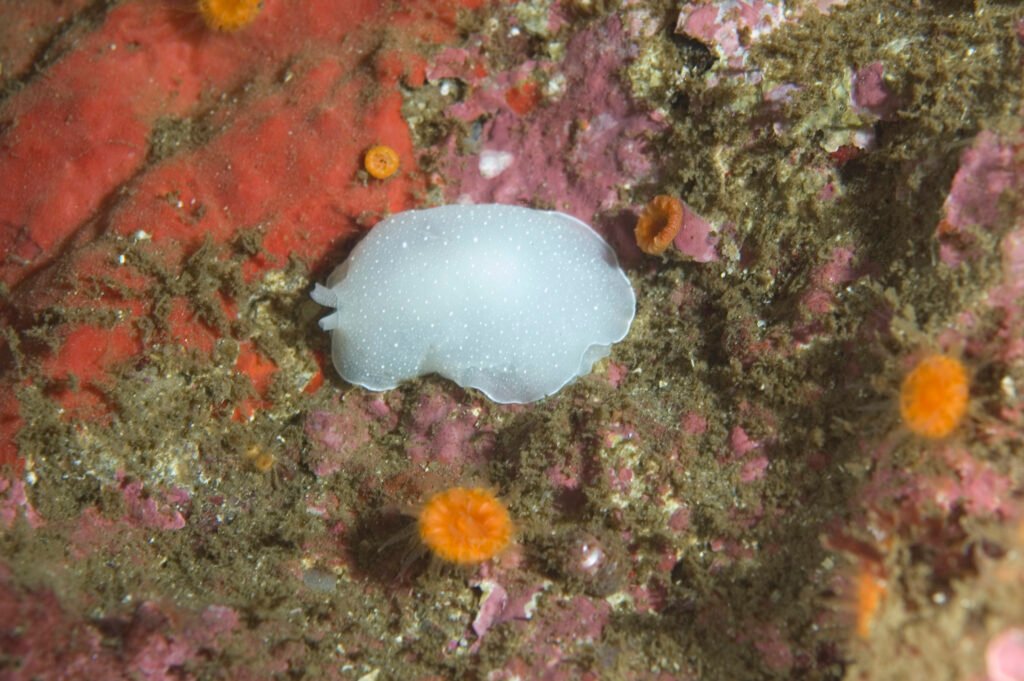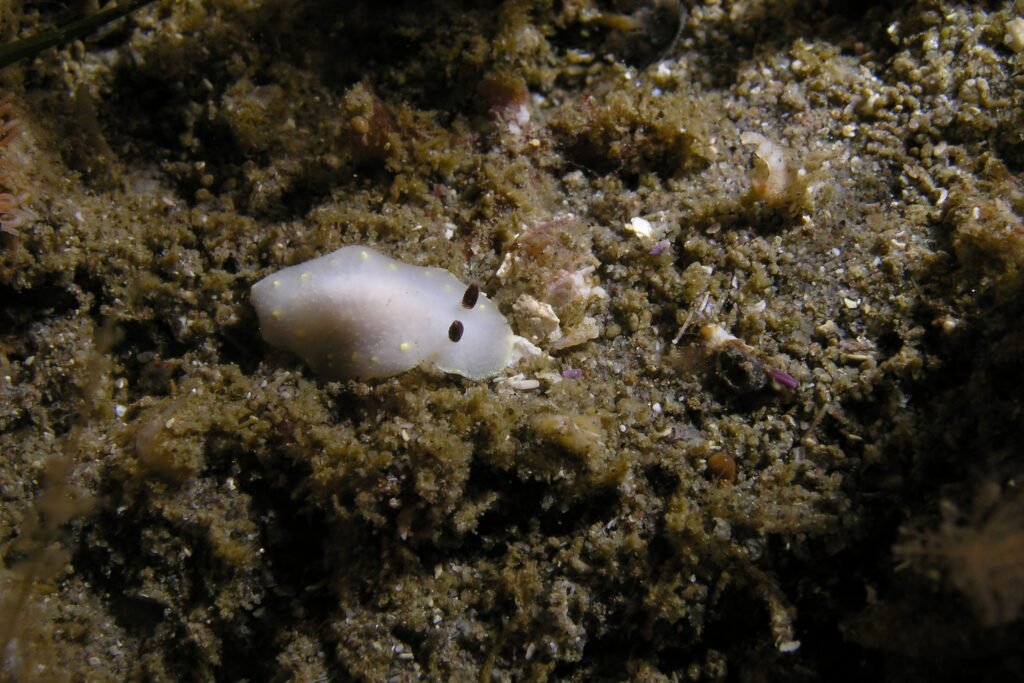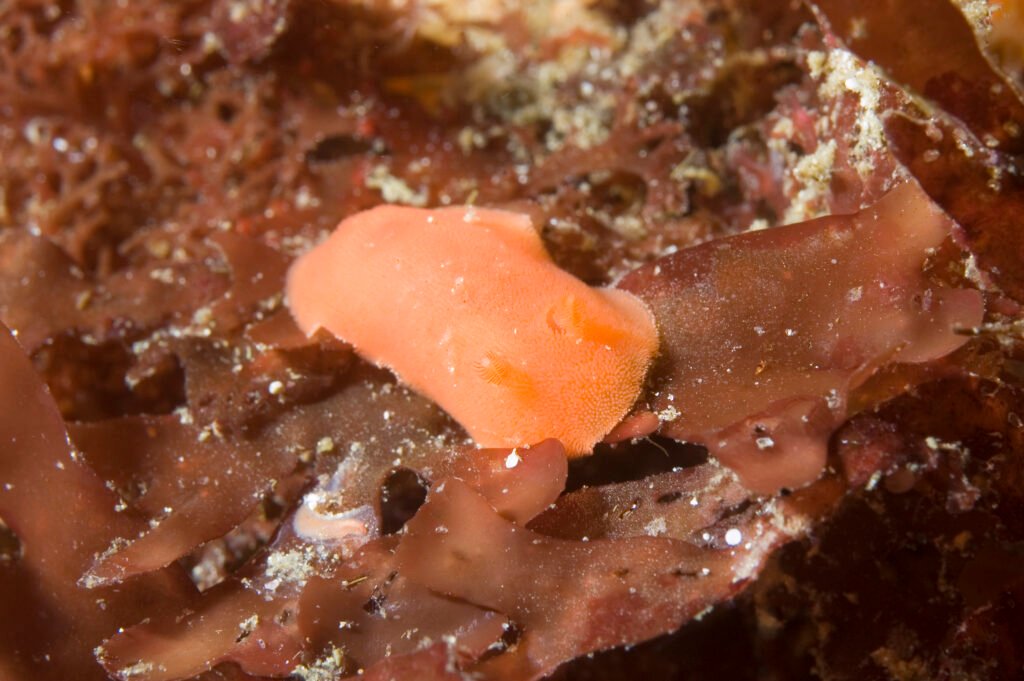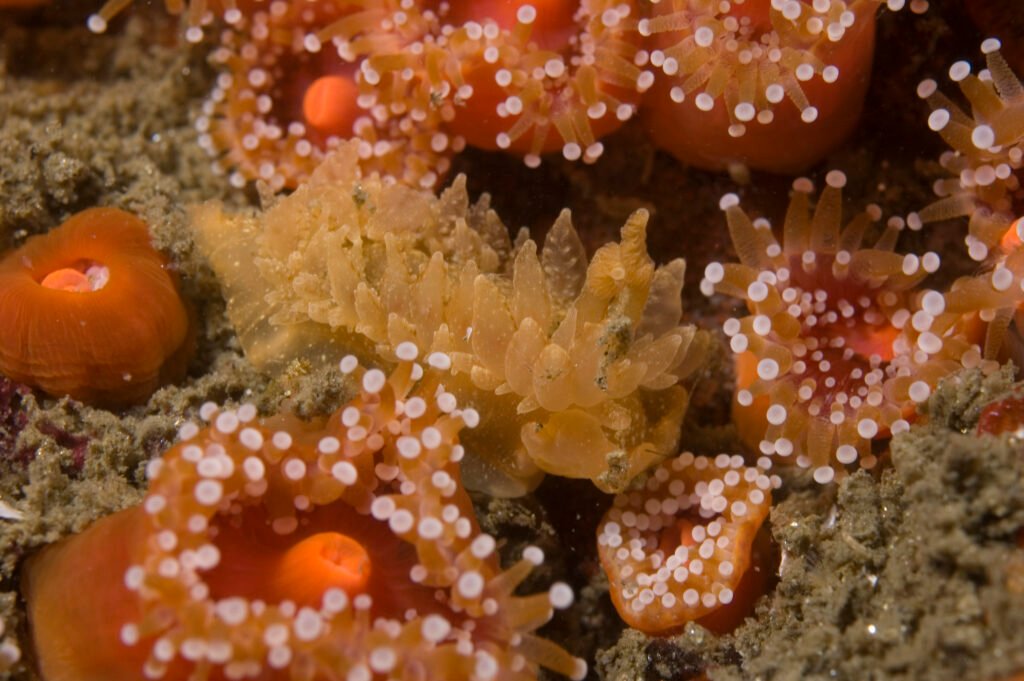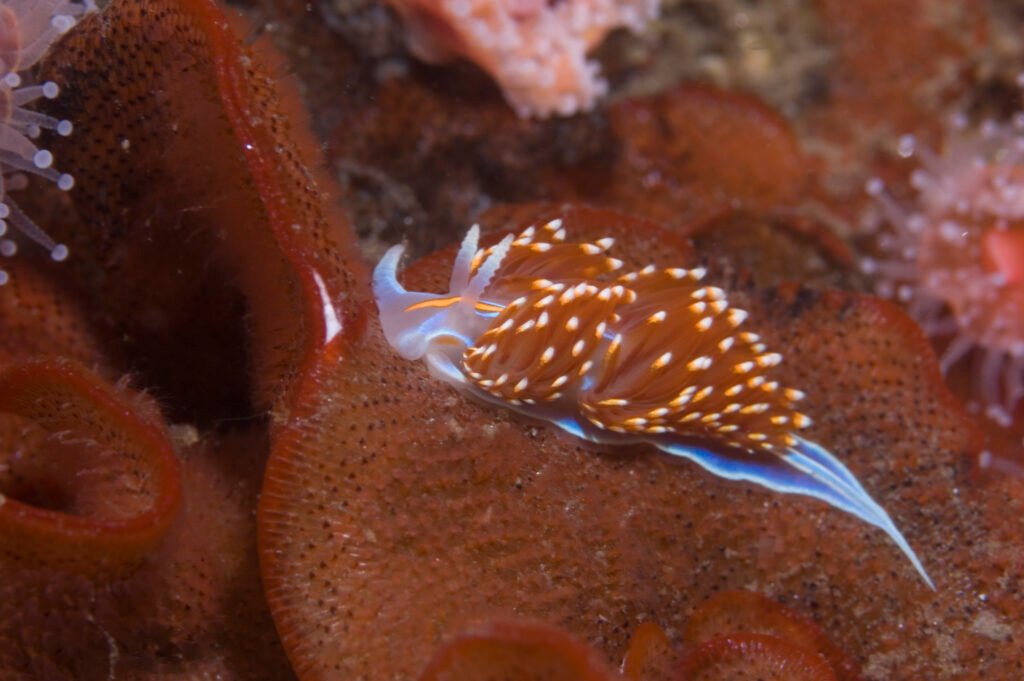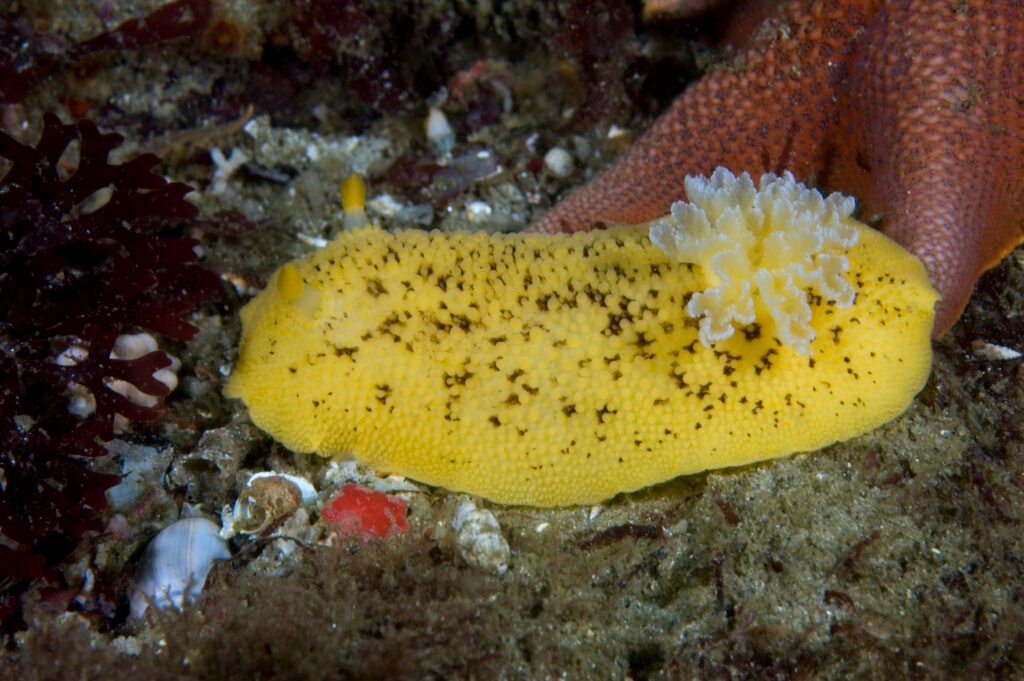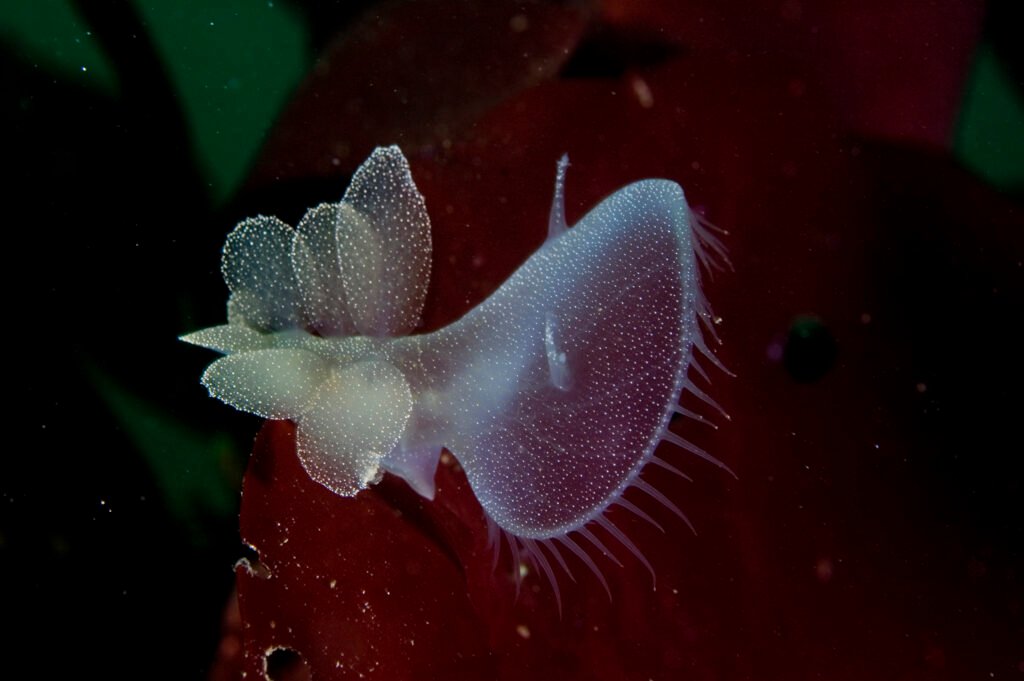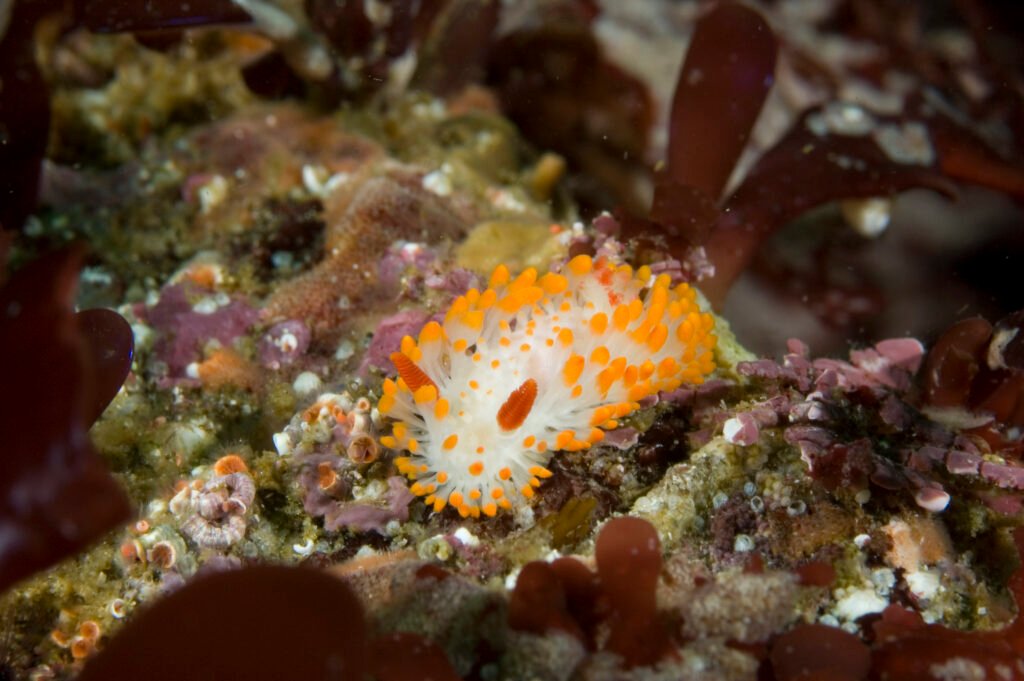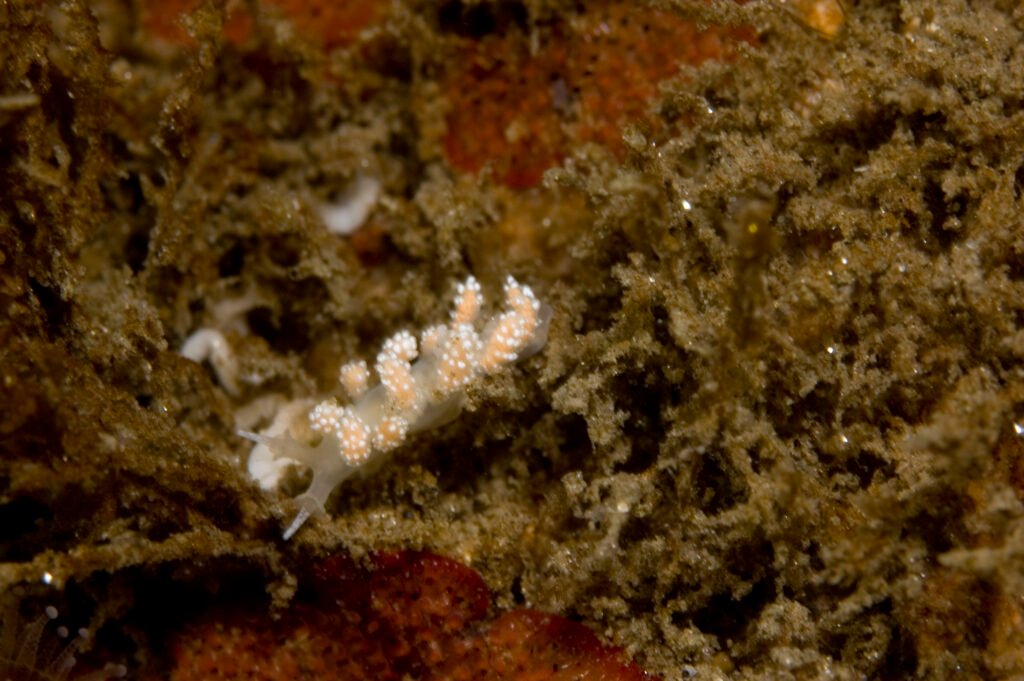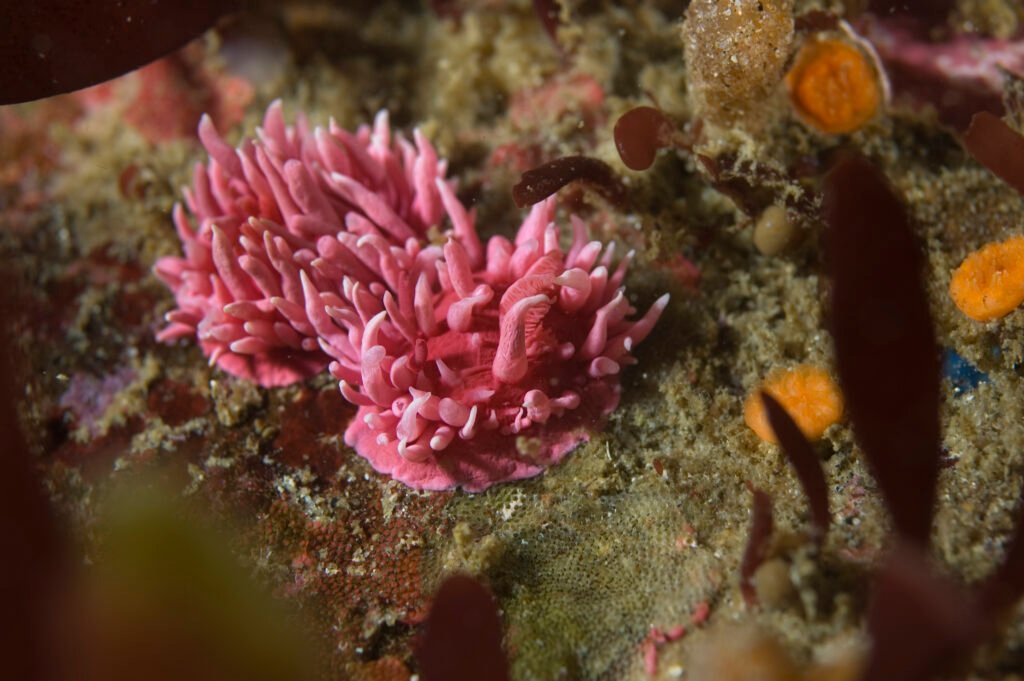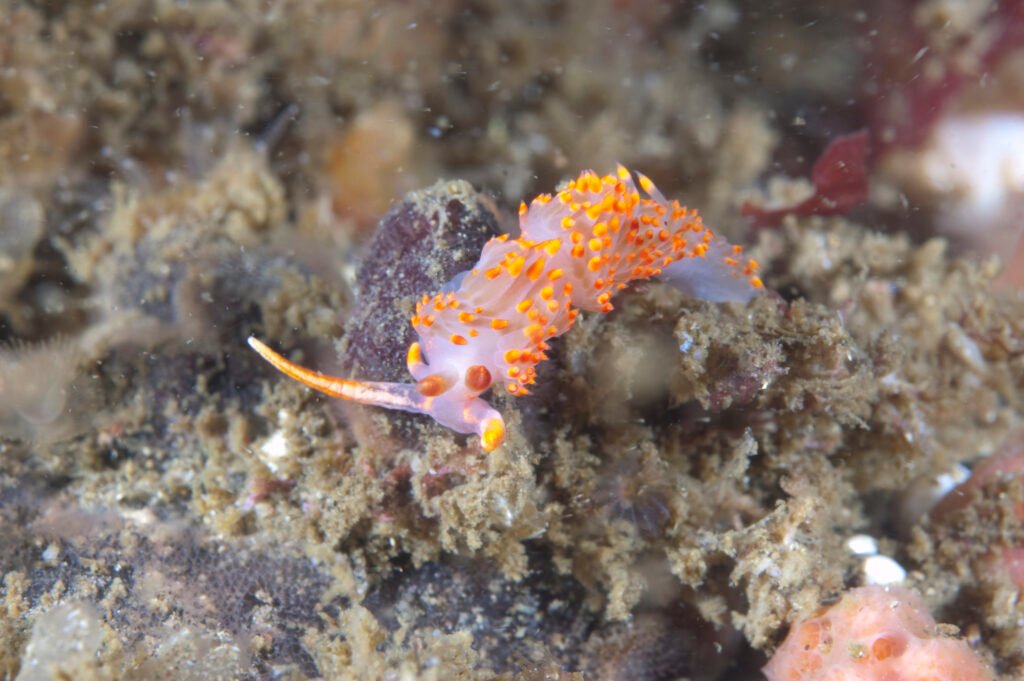Physical Description
The San Diego Dorid, scientifically known as Diaulula sandiegensis, features an oval body ranging from 30 to 150 mm in size. Its coloration varies, appearing in shades of white, cream, or pale yellow, often adorned with paired irregular dark rings or spots arranged in two rows on its dorsum.
Habitat and Geographical Range
Diaulula sandiegensis is infrequently found on rocks along the eastern Pacific coast. It occupies habitats where it can access its preferred food source, sponges.
What They Eat and How They Breed
This species feeds on sponges. For reproduction, it likely follows patterns typical of dorid nudibranchs, laying eggs in gelatinous masses.
Similar Nudibranchs
There are several species of white dorid nudibranchs found in Monterey. For species often mistaken for the San Diego dorid, check out these links.
Hudson’s Dorid
Explore the unique features of Hudson's Dorid, a whitish-hued nudibranch adorned with yellow-tipped tubercles, found along the eastern Pacific coast in diverse marine habitats.
Yellow-Edged Cadlina
Explore the captivating features of the Yellow-edged Cadlina, a nudibranch species native to the eastern Pacific coast, showcasing cream-to-yellow hues and distinct tubercle patterns.
Ridge-tailed Dorid
Discover the Ridge-tailed Dorid, a fascinating nudibranch species found along the eastern Pacific coast. Learn about its physical characteristics, habitat, diet, breeding habits, and more.
White Berthella
Discover the White Berthella, Berthella californica, along the eastern Pacific coast. Learn about its appearance, habitat, diet, reproduction, and interaction with humans.
White Knight Dorid
Discover the elegant White Knight Dorid, a large nudibranch species with a pure white appearance, often exceeding 100mm in length, found along the eastern Pacific coast.
Yellow-Spotted Cadlina
Discover the mesmerizing features of the Yellow-spotted Cadlina, a nudibranch species native to the eastern Pacific coast, adorned with lemon-yellow dots on a cream-colored backdrop.
